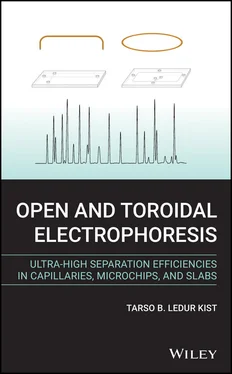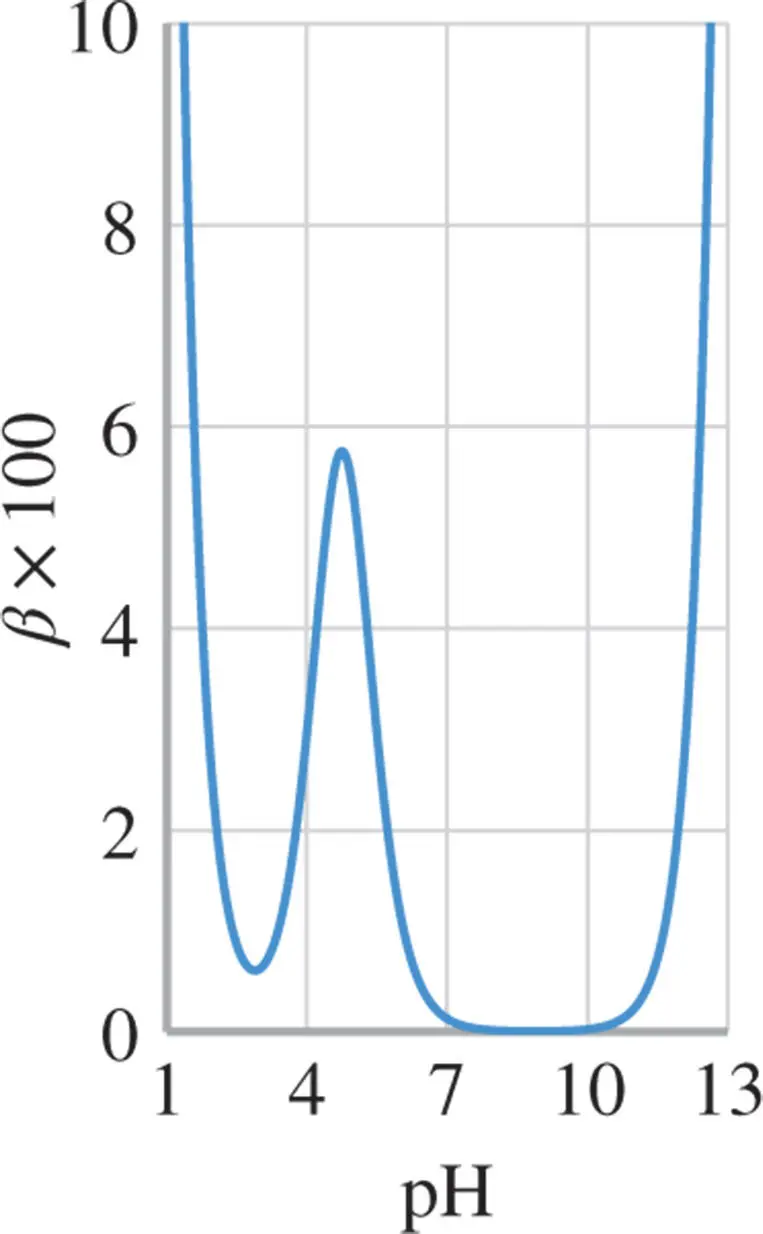Tarso B. Ledur Kist - Open and Toroidal Electrophoresis
Здесь есть возможность читать онлайн «Tarso B. Ledur Kist - Open and Toroidal Electrophoresis» — ознакомительный отрывок электронной книги совершенно бесплатно, а после прочтения отрывка купить полную версию. В некоторых случаях можно слушать аудио, скачать через торрент в формате fb2 и присутствует краткое содержание. Жанр: unrecognised, на английском языке. Описание произведения, (предисловие) а так же отзывы посетителей доступны на портале библиотеки ЛибКат.
- Название:Open and Toroidal Electrophoresis
- Автор:
- Жанр:
- Год:неизвестен
- ISBN:нет данных
- Рейтинг книги:4 / 5. Голосов: 1
-
Избранное:Добавить в избранное
- Отзывы:
-
Ваша оценка:
Open and Toroidal Electrophoresis: краткое содержание, описание и аннотация
Предлагаем к чтению аннотацию, описание, краткое содержание или предисловие (зависит от того, что написал сам автор книги «Open and Toroidal Electrophoresis»). Если вы не нашли необходимую информацию о книге — напишите в комментариях, мы постараемся отыскать её.
The exact expressions of separation efficiency, resolution, peak capacity, and many other performance indicators of the open and toroidal layouts are presented and compared.
Featuring numerous illustrations throughout,
offers chapters covering: Solvents and Buffer Solutions; Fundamentals of Electrophoresis; Open Layout; and Toroidal Layout. Confronting Performance Indicators is next, followed by chapters on High Voltage Modules and Distributors; Heat Removal and Temperature Control; and Detectors. The book finishes with an examination of the applications of Toroidal Electrophoresis.
The first book to offer a detailed account of Toroidal Electrophoresis—written by one of its creators
Compares the toroidal layouts with the well-established open layouts of the three most used platforms (Capillary, Microchip, and Slab) Provides solutions to many of the experimental issues arising in electromigration techniques and discusses the voltage distributors and detectors that are compatible with the toroidal layouts Richly illustrated with a large number of useful equations showing the relationships between important operational parameters and the performance indicators
is aimed at method developers and separation scientists working in clinical analysis, and food analysis, as well as those in pharmacology, disease biomarker applications, and nucleic acid analysis using the Capillary, Microchip, or slab Platform. It will also benefit undergraduate and graduate students of inorganic analytical chemistry, organic analytical chemistry, bioanalysis, pharmaceutical sciences, clinical sciences, and food analysis.

 ) of a buffer solution is a measurable quantity and is defined as:
) of a buffer solution is a measurable quantity and is defined as:
 is defined as the derivative of the amount of equivalents (of a strong acid or base) to the pH. The unit of
is defined as the derivative of the amount of equivalents (of a strong acid or base) to the pH. The unit of  is the amount of equivalents that must be added to one liter of a buffer solution in order to change pH by one unit. Buffer solutions with high buffer capacities are always desired. In the laboratory
is the amount of equivalents that must be added to one liter of a buffer solution in order to change pH by one unit. Buffer solutions with high buffer capacities are always desired. In the laboratory  is measured by titration and observing the amount of equivalents (
is measured by titration and observing the amount of equivalents (  ) of a strong base (or acid) that must be added to one liter of a buffer solution with an initial pH of
) of a strong base (or acid) that must be added to one liter of a buffer solution with an initial pH of  , in order to increase (or decrease) its pH from
, in order to increase (or decrease) its pH from  to
to  . This permits the definition of
. This permits the definition of  (depending on the sensitivity and precision of the pH-meter used). At this point the titration is paused and the buffer capacity of the solution at
(depending on the sensitivity and precision of the pH-meter used). At this point the titration is paused and the buffer capacity of the solution at  is calculated as follows:
is calculated as follows:  . Following this the titration is continued until the pH is changed by another increment of
. Following this the titration is continued until the pH is changed by another increment of  .
.  is then calculated as
is then calculated as  , and so on. Plotting the
, and so on. Plotting the  values of a buffer against pH gives nothing more than a density probability distribution.
values of a buffer against pH gives nothing more than a density probability distribution.
 ) in an aqueous solution in the 1 to 13 pH range.
) in an aqueous solution in the 1 to 13 pH range. to
to  (or the reverse). This integral represents the area under the curves
(or the reverse). This integral represents the area under the curves  between
between  and
and  .
.
 (at 25
(at 25  C),
C),  , and
, and  is the initial activity of the weak acid used to prepare the buffer solution. For instance, if 0.1 mol of acetic acid is used to prepare one liter then
is the initial activity of the weak acid used to prepare the buffer solution. For instance, if 0.1 mol of acetic acid is used to prepare one liter then  if
if  . The same equation can be applied to a weak base (B), however in this case
. The same equation can be applied to a weak base (B), however in this case  represents the initial activity of the weak base used.
represents the initial activity of the weak base used. of acetic acid. Figure 1.7shows the same for a 0.1 M solution of Tris.
of acetic acid. Figure 1.7shows the same for a 0.1 M solution of Tris. weak acids and a strong base (or a mixture of
weak acids and a strong base (or a mixture of  weak bases and a strong acid), then the buffer capacity can still be predicted for each pH as follows:
weak bases and a strong acid), then the buffer capacity can still be predicted for each pH as follows:










